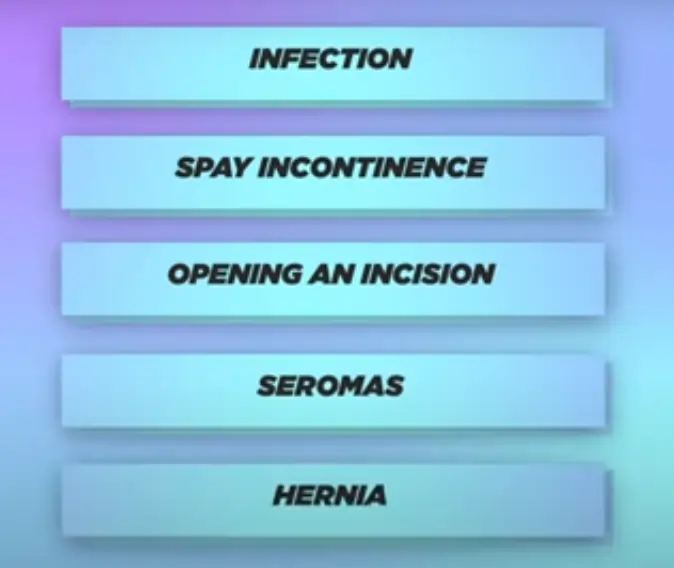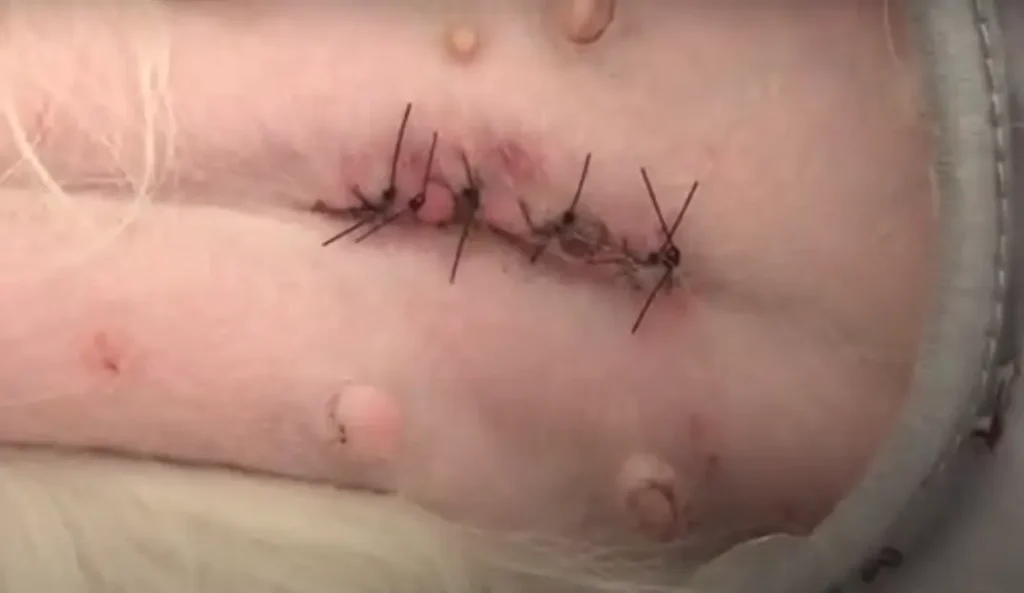What Causes Dogs to Jump After Being Spayed?
It's quite common for dogs to exhibit jumping behaviors after spayed surgery, which can arise from multiple sources. Your dog might be experiencing discomfort or pain at the surgery site, or may simply be reacting to the stress associated with the procedure.
If your dog was active and accustomed to jumping prior to surgery, these behaviors might persist out of habit. Monitoring their activity closely during the recovery phase is crucial to prevent excessive exertion. Consulting your veterinarian is recommended to effectively manage and understand your dog’s post-operative behaviors.Key Considerations for Post-Spay Recovery
- Minimizing Jumping Risks: Jumping after spay surgery can be problematic as it may hinder the healing process. To manage this, it’s important to keep your dog calm and restrict their movements.
- Effective Strategies to Prevent Jumping:
- Crate Training: Encourage rest periods in a crate.
- Mental Stimulation: Engage your dog with brain games and puzzles.
- Environment Enrichment: Keep the environment stimulating with new toys and interactive sessions.
- Physical Restrictions: Use a short leash during recovery to control movement and explore calming aids or supplements.
- Post-Operative Care Tips:
- Provide soft bedding and ensure comfort at the sleeping area.
- Offer small, frequent meals and ensure regular potty breaks.
- Regularly check the incision site for any signs of infection or irritation.
- Handling Complications:
- Be alert for any complications like open wounds or seromas (fluid build-up).
- Know when to contact your vet if you observe unusual behaviors or if complications arise.
- Recovery Duration and Activity Resumption:
- The recovery period can vary among dogs, and it’s crucial to follow your vet’s guidance on when it’s safe for your dog to resume activities like jumping on couches or navigating stairs.
Understanding Post Spayed Recovery in Dogs
5 Possible Complications After Spayed Your Dog

Post-spay recovery is a delicate period for female dogs. Spaying, a common veterinary procedure, involves removing a dog’s reproductive organs, which necessitates a quiet recovery phase to prevent complications. Despite adhering to veterinary advice, dogs may instinctively jump or engage in vigorous activity, posing risks to their healing process. This article draws on insights from Dr. Ivana Crnec, a licensed veterinarian, highlighting the critical nature of managing post-spay behaviors.
What Does Spay Surgery Entail?
Spay surgery in dogs is aimed at preventing reproduction and eliminating heat cycles. The procedure can be an ovariohysterectomy, removing both the uterus and ovaries, or an ovariectomy, which involves only the removal of the ovaries. While both procedures halt the reproductive cycle, ovariohysterectomy is preferred for its added benefit of reducing the risk of future reproductive diseases.
Why is Jumping Post-Spay Problematic?
Jumping after spay surgery can disrupt the healing process. The operation involves intricate sutures that can be vulnerable to stress from excessive movement. Managing your dog’s activity post-spay is crucial to ensure the incisions heal properly and to prevent complications such as opened wounds or infections.
Immediate Actions if Your Dog Jumps Post-Spay
If your dog jumps shortly after surgery, it’s important to inspect the incision area for any signs of distress such as tearing, swelling, or discharge. Maintaining calm and monitoring for any changes in behavior or signs of pain are crucial in assessing whether immediate veterinary attention is needed.
Strategies to Prevent Jumping After Spay Surgery
Preventing jumping is key to a safe recovery. Here are several strategies to help keep your dog calm and engaged during their recovery period:
- Encourage Rest: Utilize crate time to limit activity.
- Stimulate the Mind: Engage your dog with interactive brain games.
- Create a Soothing Environment: Introduce new toys and spend quality time together.
- Control Movement: Use a short leash during brief walks and consider calming aids or supplements.
Understanding and Mitigating Risks

The post-operative period requires vigilant monitoring to ensure a smooth recovery. Understanding the potential for and implications of activities like jumping can help mitigate
Implementing Crate Training Pre-Surgery
Introducing my dog to ‘Practice Crate Time’ prior to her spay surgery proved invaluable. This approach significantly restricted her movement, ensuring a controlled and safe recovery environment. Not only did it speed up her healing process, but it also provided immense peace of mind knowing she was secure and comfortable.
Engaging in Interactive Brain Games
To keep my dog mentally stimulated yet physically restrained post-surgery, I turned to interactive brain games. Homemade puzzles and toys, like the muffin tin treat game, became essential tools in our recovery toolkit, offering both enjoyment and safety during her recuperation period.
Creating a Stimulating Recovery Environment
Ensuring my dog’s recovery space included a room with large windows provided vital mental stimulation. The view of the outdoors played a crucial role in enriching her environment, offering tranquility and a sense of connection to the outside world, which is beneficial for her emotional and mental health during recovery.
Investing in New Toys
Investing in new toys, such as Kong stuffed with peanut butter or soft treats, was pivotal during the recovery phase. These toys provided gentle engagement, allowing her to enjoy snack time without physical exertion, which kept her both entertained and stationary.
Quality Time and Gentle Interaction
Post-surgery, spending quality time with my dog became invaluable. Engaging in low-impact activities like gentle massages not only enhanced our bond but also promoted her physical recovery by improving circulation and reducing post-operative stress.
Utilizing a Short Leash for Controlled Outings
As my dog approached the end of her recovery, increasing her time outdoors for essential trips became necessary. Using a short leash during these outings helped control sudden movements and ensured a safe, gradual reintroduction to her normal activities.
Incorporating Calming Aids and Supplements
When traditional methods weren’t enough to keep her calm, I consulted our vet and began using calming aids like CBD and pheromones. These supplements played a significant role in easing her post-surgery anxiety and managing her impulses to jump or run.
Preventing Unwanted Jumping Post-Surgery
To ensure my dog didn’t jeopardize her recovery by jumping, I took proactive steps to modify her environment. This included blocking off furniture and limiting her accessible space to a crate or puppy pen, filled with toys to keep her engaged and content. This strategy was crucial in keeping her safe and calm, especially when visitors were present.
More info: Why Dogs Don’t Jump After Being Spayed
Duration of Calmness Required Post-Spay
The initial recovery from spay surgery is usually quick, with dogs feeling better within 24 to 48 hours. However, a full recovery can take up to two weeks, during which it’s vital to maintain a calm environment to prevent any strenuous activity that could impact healing. Observing her behavior closely during this period, like monitoring her appetite and energy levels, is essential to ensure a smooth recovery and to determine when to seek further veterinary care if necessary.
Providing Comfort During Recovery
Ensuring your dog’s comfort post-surgery is crucial. Soft bedding is essential, helping to prevent pressure sores and enhancing comfort during recovery.
Feeding and Hydration
After surgery, start with small, manageable meals to avoid upsetting your dog’s stomach, gradually increasing the portion size as they adjust. Regular access to outdoor bathroom breaks is also critical to their comfort and health.
Incision Care
Closely monitor the surgery site for any signs of infection, such as redness, swelling, or discharge. Immediate contact with your veterinarian is necessary if any of these symptoms appear, to prevent complications and ensure a smooth recovery.
Understanding Post-Spay Recovery Variability

Recovery from spay surgery typically takes about two weeks, but this can vary widely among dogs due to several factors. Conditions such as existing health issues, obesity, or complications with connective tissue can prolong recovery times and may require additional care and observation to address potential risks.
Providing Comfort During Recovery
Ensuring your dog’s comfort post-surgery is crucial. Soft bedding is essential, helping to prevent pressure sores and enhancing comfort during recovery.
Feeding and Hydration
After surgery, start with small, manageable meals to avoid upsetting your dog’s stomach, gradually increasing the portion size as they adjust. Regular access to outdoor bathroom breaks is also critical to their comfort and health.
Incision Care
Closely monitor the surgery site for any signs of infection, such as redness, swelling, or discharge. Immediate contact with your veterinarian is necessary if any of these symptoms appear, to prevent complications and ensure a smooth recovery.
Understanding Post-Spay Recovery Variability
Recovery from spayed surgery typically takes about two weeks, but this can vary widely among dogs due to several factors. Conditions such as existing health issues, obesity, or complications with connective tissue can prolong recovery times and may require additional care and observation to address potential risks.
Understanding the Risks of Jumping Post-Spay
When a dog that has recently undergone spay surgery engages in jumping, it may jeopardize their recovery. While a minor leap might not cause immediate concern if there are no visible issues like bleeding or open stitches, repeated or vigorous jumping increases the risk of complications.
Recognizing and Addressing Complications
- Open Wound Risks: Vigorous activity post-spay can cause sutures to reopen, leading to wounds that may become infected. It’s critical to keep your dog calm to ensure the internal and external stitches heal properly.
- Managing Seromas: Seromas, or fluid accumulations near the surgical site, are common. These typically resolve themselves but require monitoring to ensure they don’t indicate an underlying infection.
When to Seek Veterinary Care
If your dog shows any of the following signs after jumping or resuming activity, it’s crucial to contact your veterinarian:
- Unusual lethargy or discomfort
- Persistent bleeding or oozing from the incision
- Swelling or changes in the appearance of the incision site
- Ripped stitches or visible gaps in the wound
- Behavioral changes like excessive licking of the wound or changes in appetite
Gradual Reintroduction to Normal Activities
- Jumping on Furniture: It is generally safe for your dog to start jumping onto the couch about two weeks after surgery, but this should be reintroduced slowly to avoid straining the healing wound.
- Using Stairs: Avoid letting your dog climb stairs for at least ten days post-surgery. If unavoidable, assist your dog by carrying them to prevent stress on the surgical site.
- Short Walks: If your dog seems comfortable, short, controlled walks are acceptable a few days post-surgery for bathroom breaks. Keep the leash short and avoid any situation where your dog might jump or pull.
Summary
After your dog has been spayed, closely monitoring their activity levels and any signs of distress or complications is essential for a safe and smooth recovery. Gradually reintroducing them to their normal routines, while ensuring they remain calm and restrained, will help prevent issues associated with their recent surgery.
Frequently Asked Questions Spayed Dogs
What happens if my dog is too active after spay?
After spaying, if a dog is excessively active, it can hinder the healing process, potentially causing swelling and the development of seromas, which are fluid-filled pockets near the incision site. It’s crucial to manage your dog’s activity by limiting it to short, leashed walks and avoiding intense activities such as running or playing off-leash. Proper activity management during the initial recovery period helps ensure a smoother and safer healing process.
Can my dog go up and down stairs after being spayed?
In the week following spaying, it is important to restrict activities that could strain the surgical site, such as running, jumping, and rough play. You can start reintroducing controlled activities, like going up and down stairs on a leash, a few days after the surgery to gradually increase your dog’s activity levels without compromising their recovery.
How long is a female dog in pain after spaying?
Typically, a female dog may experience post-surgical pain for a few days following a spay procedure. While the discomfort generally subsides within a week, if your dog continues to show signs of pain beyond this period, it is advisable to consult your veterinarian for further guidance. Monitoring your pet closely for signs of discomfort, especially after unexpected movements like jumping, is essential for addressing any issues promptly.
Concluding Insights on Post-Spay Care for Dogs
Ensuring your dog’s well-being after spay surgery requires a balance of comfort and careful observation. Key practices include maintaining a calm environment to prevent vigorous activities such as jumping and playing. It’s critical to monitor any changes in your dog’s behavior or at the incision site during the recovery phase. If your dog exhibits increased activity levels or signs of discomfort, promptly consulting with your veterinarian is essential for a safe and healthy recovery.
Disclaimer
This content is provided for informational purposes based on the author’s knowledge and is not intended to substitute for professional veterinary advice. Always seek the guidance of a qualified veterinarian for any questions regarding your pet’s health. Immediate veterinary care is imperative if your pet shows any signs of distress.